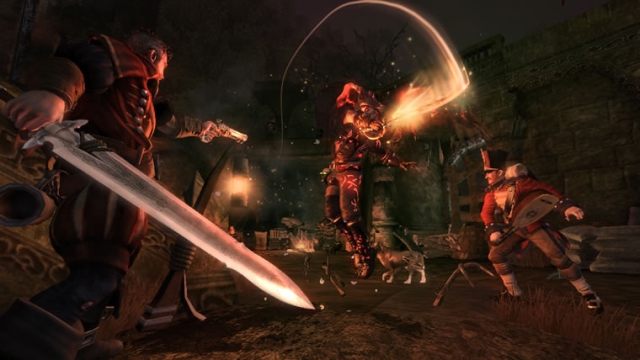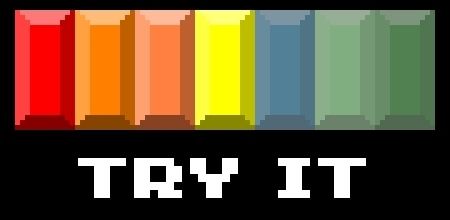
Thanks to the never-ending hubris of Peter Molyneux, the Fable franchise has constantly fought for respect from gamers. Both Fable and Fable II were solid and enjoyable role-playing games, but the quality of the games was greatly overshadowed by pre-release hype – the kind of hype that makes for a game that can never live up to the expectations. This is likely why Fable III seemed to sneak in through the back door in 2010’s busy Q4 – to avoid the same kind of attention that doomed the first two games. Does this more muted release make much of a difference in the long run? Well…
Platform: Xbox 360
Publisher: Microsoft Game Studios
Developer: Lionhead Studios
Genre: Role-Playing Fart Simulator
Release Date: October 26, 2010
ESRB Rating: Mature
In prior Fable games, the main character was the typical “rags to riches” sort that rose from nothing to become a legendary Hero. For Fable III, Lionhead has mixed things up just slightly. This time around, your character is already in a position of great power – as either the prince or princess of Albion. Things aren’t all sugar and rainbows, though, as your brother Logan – known to the rest of Albion as the King – has become a ruthless tyrant who is slowly sucking the life out of his territory. The only solution? Revolution – a desperate attempt to topple Logan’s regime and take the crown for yourself. Which begs the question – would you be a benevolent ruler, or just pick up Logan’s mantle and continue his tyranny?
Fable III can best be described as a tale of two games. In the earliest hours while Logan still rules, your goal is to win the support of revolutionary allies. You travel to various places in Albion, help local leaders with their problems, and they pledge their support for your theoretical reign as monarch…with a catch. Like every other politician on the planet, in order to win the support of potential subjects you have to promise them stuff. Agree to their request (and by agree I mean you hold A to accept the proposals since you can’t actually get around making the promises) and they’ll lend a hand when you’re ready to tackle Logan. During this stretch of the adventure all the typical Fable mechanics come into play and you’ll fight lots of bandits, Hobbes, and Hollow Men as you travel the world.
When you do gain the throne, the game changes. Completely. With great power comes great responsibility; remember all those promises you were forced to make? Yeah, now you have to either live up to them and watch money drain from the royal treasury, or be a huge jerk and refuse to deliver in order to preserve said funds. This delicate balance of building up a surplus – for story reasons that are spoileriffic – while doing good for your subjects is the greatest challenge in the entire game, especially since Fable III brutally punishes you for trying to be benevolent. I do not joke when I say I spent 10-15 hours making pies (that’s right, PIES!) just to raise up enough money to build up enough to handle…well, you know…spoilers. If you’re a complete asshole and build a whorehouse instead of an orphanage or increase taxes on citizens, you’ll have more than enough cash…but you will be hated everywhere you go. Even worse, there’s only a handful of story-based quests to tackle, a welcome sight after spending time playing Lord or Lady. Even then, they’re just basic fetch quests designed to earn you some extra money for the treasury.

Suffice it to say, the second half of the game is a huge drag unless you actually want to be the biggest jerk in the history of jerkdom. It’s obviously Lionhead’s form of subtle political commentary, but it makes the back half of the game incredibly tedious and frustrating. It’s a real shame too, as the buildup to the moment where you confront Logan is quite excellent, with some of the best gameplay in the series. Sure, it’s the same thing as Fable II’s simple one-button action, but it manages to satisfy without becoming cumbersome. Thankfully the game features a multitude of mini-adventures and other side-quests, along with the usual Fable debauchery such as getting married, farting on your spouse, murdering them, marrying a hooker, killing them, marrying 124 other people, reproducing like rabbits, etc. Becoming a real-estate magnate isn’t quite as simple as previous games though – while businesses can be treated as pure cash creators, homes have to be checked on occasionally to make sure they’re not in a state of disarray, or the tenant will just leave.
Fable III’s biggest gameplay change is the removal of the traditional RPG menus. Early on in the game you unlock the “Sanctuary,” a sort of portal that’s occupied by your insanely loyal butler, Jeeves (played by one John Cleese). This hub is where almost everything happens; you can save your game, check earned Achievements, access the world map and quest list, equip different outfits and weapons, and thankfully manage the treasury (trying to find it in the Bowerstone Castle is oftentimes an exercise in complete agitation). This replacement of typical menus from other games in the genre seems novel, but after a while it got a bit frustrating to access it just to manually save. Thankfully it’s easy to just press the Xbox Guide button, which opens up a basic menu to easily save progress. Character leveling is also accessed through the Sanctuary, in a special area called the Road to Rule. In here you use earned experience – dubbed Guild Seals – to purchase new abilities, new levels for the three jobs available, and increase the power of the three Hero attributes. Again, something that’s neat at first…but in the end, it would be better if they had just stuck to traditional menus.
Fable III’s technology is a bit of a mixed bag too. Theoretically it looks better than Fable II, but it has some insane hitches. You try making pies while the game SLOWS TO A CRAWL, screwing up the rhythm of what’s nothing more than a button pressing mini-game. Even when you’re not performing the fine art of making those crusty delights, the game tends to drag and stutter way more often than it should. Even if you install the game to the 360’s hard drive, it still has hitches. It’s a real bummer considering the character models are far better and less terrifying than in the past. The general design of Albion is also tops, whether it’s the nice snowy mountain areas or the dystopian stylings of the Bowerstone Industrial district. Alas, the frame-rate completely drags the quality of the visuals down. So does the music, which is basically a series of recycled or re-styled takes on the pieces that peppered the old Fable games.
Fable III is still a good RPG with fun gameplay, an interesting series of quests, and the kind of wacky British humor that Lionhead does well. Unfortunately the game completely falls off the rails halfway through. What begins as a promising tale of revolution becomes a terrible simulation of being a monarch, and offers almost no leeway in potential methods for handling the situation you’re presented with upon taking the crown. Between that and the performance issues, Fable III can be difficult to enjoy despite the positive qualities that do exist. Perhaps it was a good thing that the game quietly hit store shelves – the game unfortunately wouldn’t have lived up to any of the potential hype that could have surrounded it.

Review Disclosure: A retail copy of Fable III was purchased by Warp Zoned for the purposes of this review.






